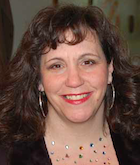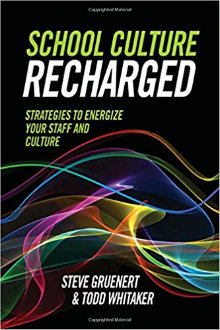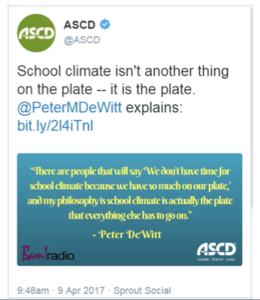Strategies to Energize School Staff and Culture
School Culture Recharged: Strategies to Energize Your Staff and Culture
By Steve Gruenert and Todd Whitaker
(ASCD, 2017 – Learn more)

In my experience a positive, learning-focused school culture is a prerequisite for school success. There is ample research to support the notion that culture can be a major player in school improvement. Reading, thinking, talking and working on school culture should be a big part of the job of school leaders at all levels. This book helps.

Realizing the power of culture and people
Each of the sixteen short chapters focuses on a different aspect of whole school culture. Gruenert and Whitaker start by stating that the book is written so that school leaders can “harness the power of culture and the power of people so that you can develop teachers and schools that are better than ever before” (p. ix). To that end, the authors ask readers to engage in a thought experiment that school leaders would do well to keep in the back of their minds every day.
Think about your school five years from now. What do you hope will be different? What stories do you need to start telling today to make it happen? (p. 11).
I certainly kept those questions in mind as I read the book, thinking about my school and how I could shift our already mostly positive and effective school culture to even better places.
Reaching for a collaborative culture
The following are the types of cultures noted in the book. They are arranged from the least productive to the most productive, meaning the goal is to move your school’s culture to “collaborative” (p. 83). Throughout the book each culture type is examined through different lenses including what each looks like for professional learning and assessment.
- Toxic
- Fragmented
- Balkanized
- Contrived
- Comfortable
- Collaborative
The chapters included helpful information and tools for working on building culture, using culture to enrich people, enhancing teaching, and elevating student voice. For example, grouping teachers such that there are strong positive influences in teams, and allowing students to share feedback on culture.
Strategies for positive change
There were also chapters focused on understanding the deep layers of culture and how to disrupt cultures to make them more positive and effective. An example here is strategic use of data to help identify strengths and needs at the teacher, team, school, and district levels.

Readers are called upon to think about how their school culture, mission, and vision align. We are also challenged to ensure they do align, cautioning leaders to align “(1) what you do with (2) why you are here and (3) who you want to be” (p. 179).
A good mix of philosophy, research, and practical strategy
School culture expert and ASCD author Peter DeWitt is quoted on Twitter as saying “School climate isn’t another thing on the plate — it is the plate.” Gruenert and Whitaker clearly share that belief, and the book does a wonderful job helping the reader believe it too.
School Culture Recharged: Strategies to Energize Your Staff and Culture is a good mix of philosophy, research, and practical strategy. I recommend that school and district leaders read it to get a handle on the what’s, how’s, and why’s of developing school cultures that help bring about success for all.
Rita Platt (@ritaplatt) is a Nationally Board Certified teacher with master’s degrees in reading, library, and leadership. Her experience includes teaching learners in remote Alaskan villages, inner cities, and rural communities. She currently is a teacher-librarian, teaches graduate courses for the Professional Development Institute and writes for We Teach We Learn. Rita will launch her MiddleWeb blog, Heart of the School, in September.
Read Doug Dunn’s MiddleWeb review of School Culture Rewired: How to Define, Assess, and Transform It here.






























